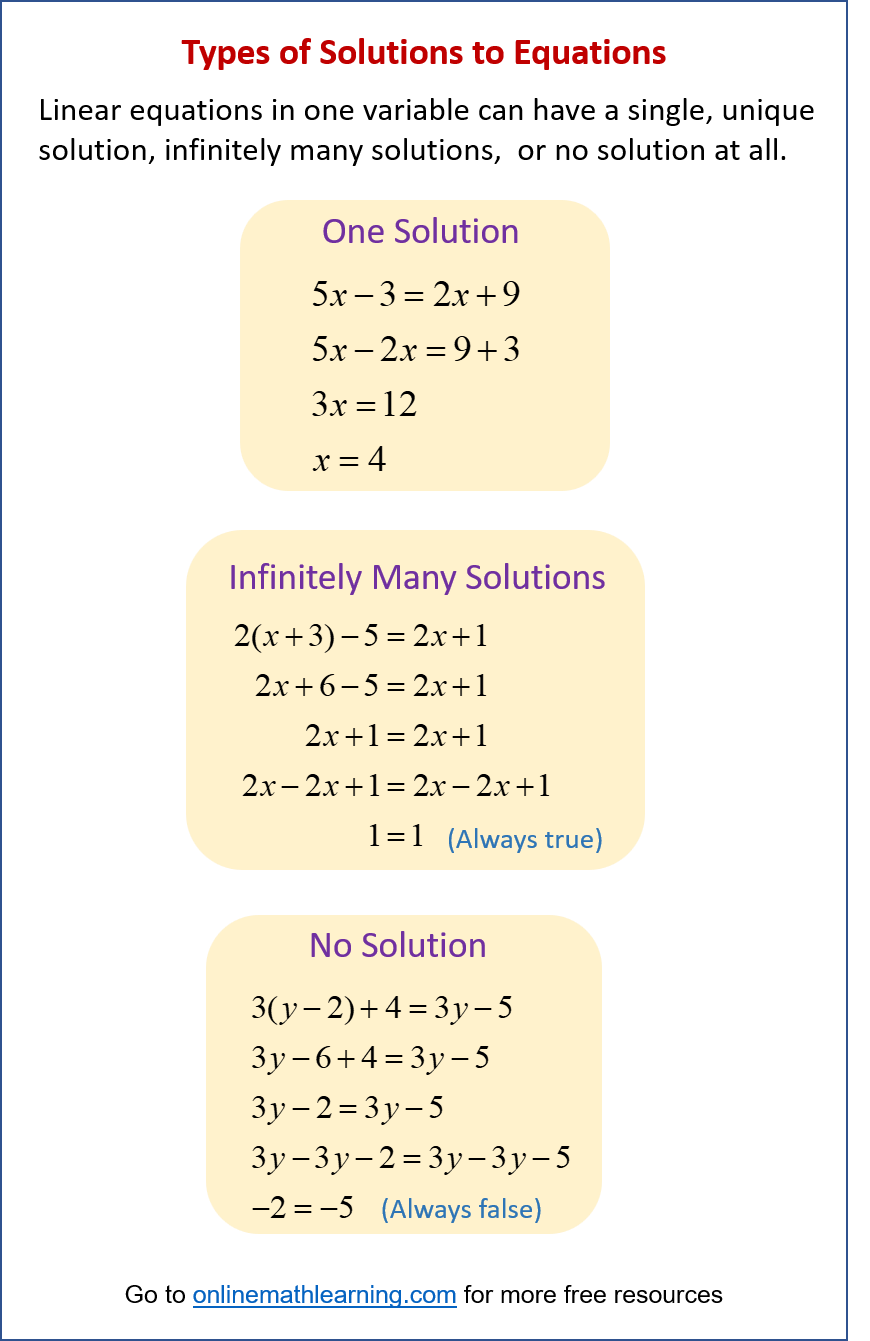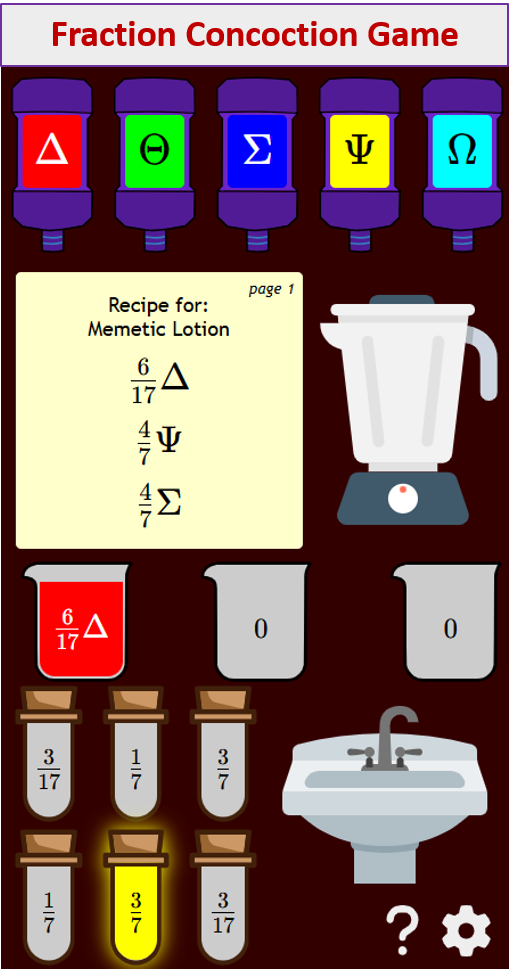Linear Equations with Infinitely Many Solutions or No Solutions
Related Topics:
More Lessons for ACT Math
Math Worksheets
Examples, solutions, videos, activities, and worksheets to help ACT students review linear equations with infinitely many solutions or no solutions.
Linear equations in one variable don’t always have a single, unique solution. Sometimes, they can have infinitely many solutions, or they can have no solution at all.
The following diagram gives some examples to show how to know if an equation has infinitely many solutions or no solution. Scroll down the page for more examples and solutions.

Algebra Worksheets
Practice your skills with the following Algebra worksheets:
Printable & Online Algebra Worksheets
1. Infinitely Many Solutions
An equation has infinitely many solutions when, after simplifying both sides, you end up with an identity – a statement that is always true, regardless of the value of the variable. This means that any real number you substitute for the variable will satisfy the original equation.
How it Happens:
This typically occurs when both sides of the equation are essentially the same expression, just possibly in a different form initially.
Example:
Solve: 2(x + 3) - 5 = 2x + 1
Distribute: 2x + 6 - 5 = 2x + 1
Simplify the left side: 2x + 1 = 2x + 1
Notice that both sides of the equation are identical. If you try to isolate x:
Subtract 2x from both sides: 2x - 2x + 1 = 2x - 2x + 1
Simplify: 1 = 1
The result 1 = 1 is always true. This indicates that the original equation is true for any value of (x). Therefore, the equation has infinitely many solutions.
2. No Solution
An equation has no solution when, after simplifying both sides, you end up with a contradiction – a statement that is always false, regardless of the value of the variable. This means that there is no real number you can substitute for the variable that will make the original equation true.
How it Happens:
This occurs when the variable terms on both sides of the equation cancel out, leaving you with a false statement involving the constant terms.
Example:
Solve: 3(y - 2) + 4 = 3y - 5
Distribute: 3y - 6 + 4 = 3y - 5
Simplify the left side: 3y - 2 = 3y - 5
Now, try to isolate y:
Subtract 3y from both sides: 3y - 3y - 2 = 3y - 3y - 5
Simplify: -2 = -5
The result -2 = -5 is always false. This indicates that there is no value of y that can make the original equation true. Therefore, the equation has no solution.
In most standard linear equations, you will find a single, unique solution. However, recognizing these special cases is an important part of understanding linear equations.
Equations with Infinitely Many Solutions or No Solution
This video shows the difference between equations with infinitely many solutions (all real numbers) and those with no solution.
Infinitely Many Solutions or No Solution? Equations Special Cases This video will show how to know if an equation has infinitely many solutions or no solution.
Solving Linear Equations with No or Infinite Solutions In this video, we look at solving linear equations with no solution, or an infinite number of solutions. When an equation has no solution is called a contradiction. When an equation has an infinite number of solutions, it is called an identity.
Try out our new and fun Fraction Concoction Game.
Add and subtract fractions to make exciting fraction concoctions following a recipe. There are four levels of difficulty: Easy, medium, hard and insane. Practice the basics of fraction addition and subtraction or challenge yourself with the insane level.

We welcome your feedback, comments and questions about this site or page. Please submit your feedback or enquiries via our Feedback page.